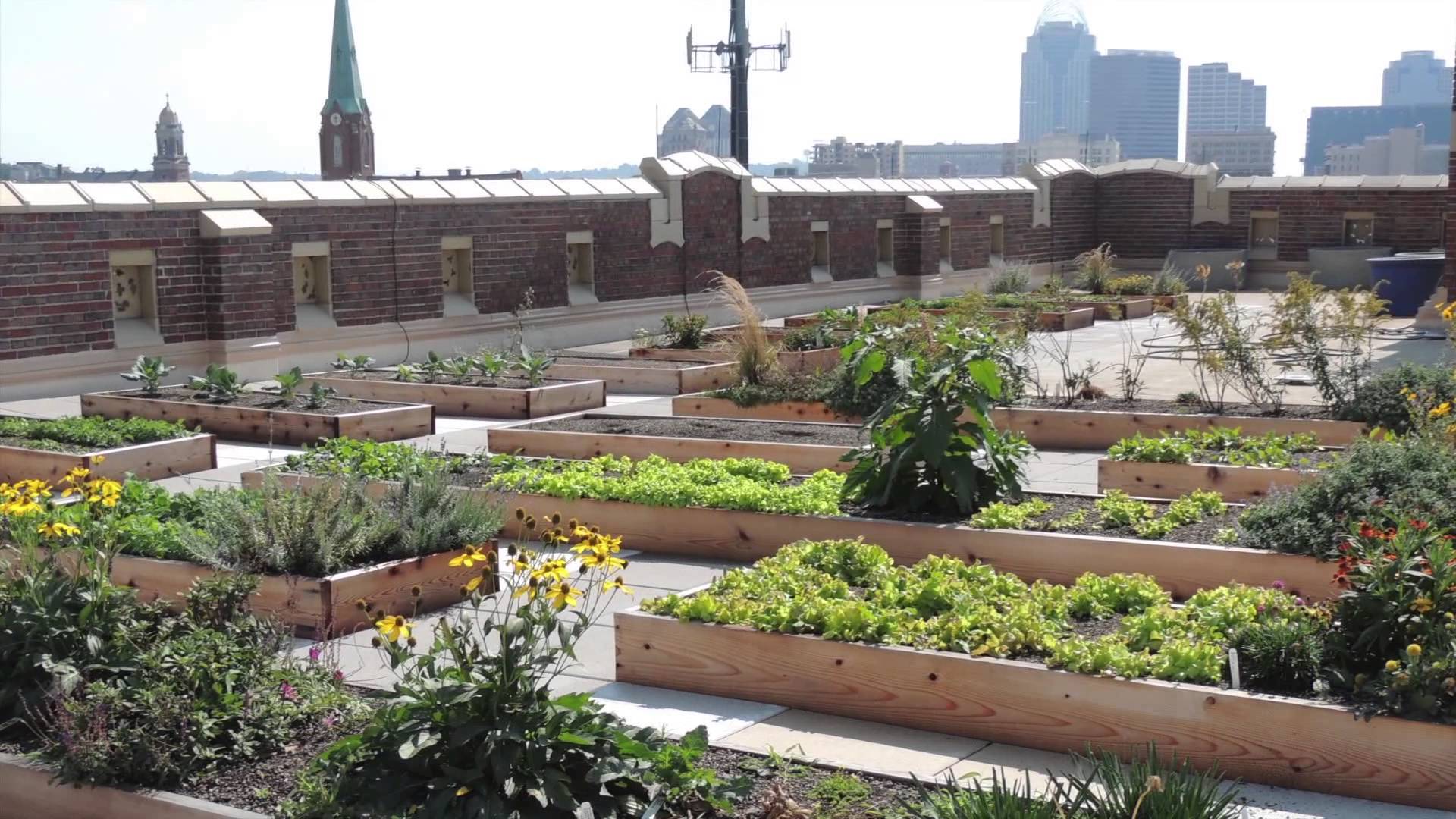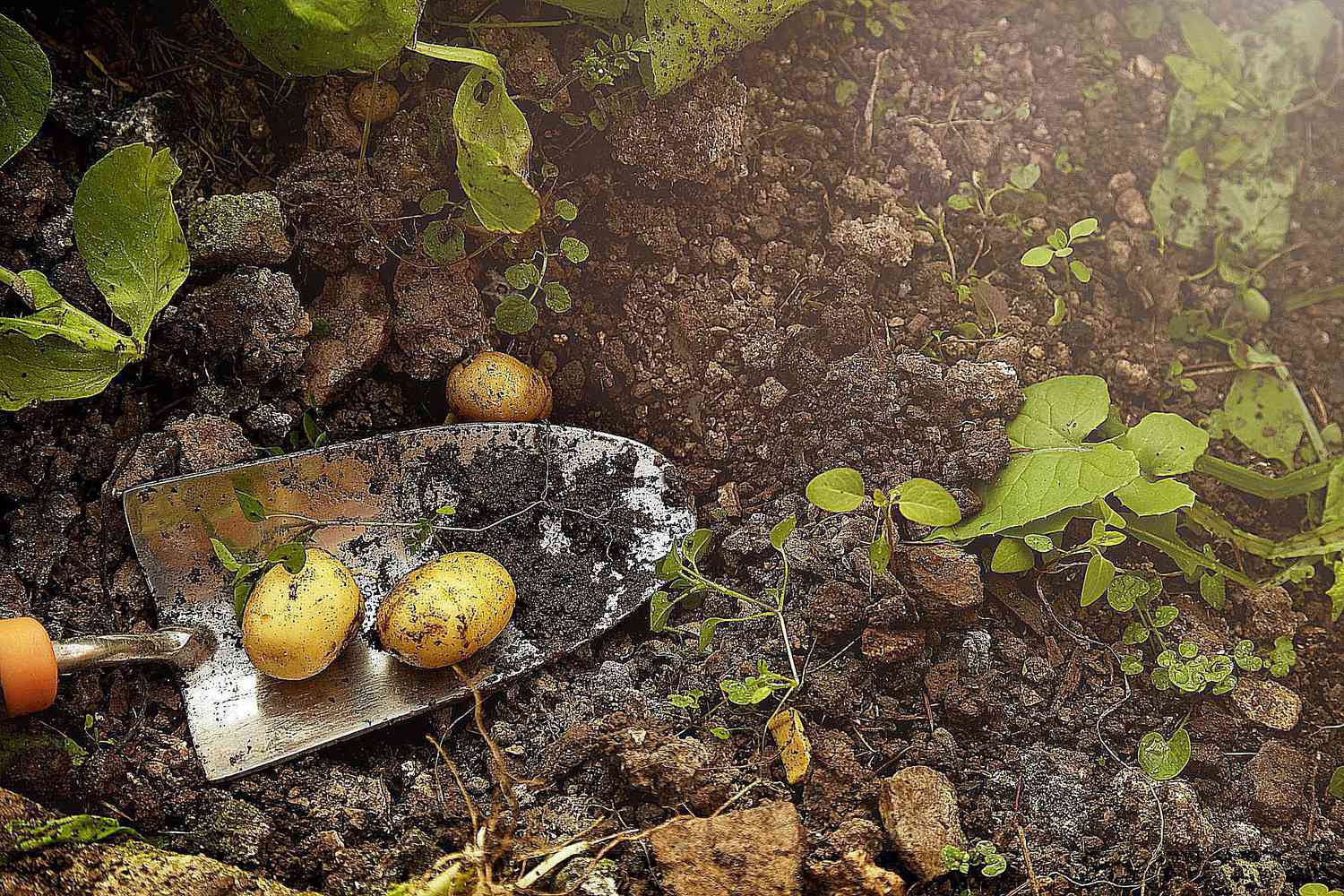Home>Gardening News and Trends>Latest News>What Is Urban Horticulture


Latest News
What Is Urban Horticulture
Modified: February 10, 2024
Stay updated with the Latest News in Urban Horticulture. Discover what urban horticulture is and how it contributes to sustainable living in cities.
(Many of the links in this article redirect to a specific reviewed product. Your purchase of these products through affiliate links helps to generate commission for Chicagolandgardening.com, at no extra cost. Learn more)
Table of Contents
Introduction
Urban horticulture is a rapidly growing field that focuses on the cultivation, management, and utilization of plants in urban settings. As cities continue to expand and green spaces become limited, urban horticulture plays a crucial role in improving the quality of urban life and creating sustainable environments.
Urban horticulture involves the strategic placement of plants, trees, and green spaces in urban areas, such as parks, gardens, rooftops, and even vertical walls. It combines elements of gardening, landscape design, and urban planning to create visually appealing and functional spaces that benefit both humans and the environment.
The importance of urban horticulture cannot be overstated. Not only does it enhance the aesthetics of urban areas, but it also provides numerous benefits to the community. Green spaces in cities help reduce air pollution, filter pollutants from rainwater runoff, and mitigate the urban heat island effect.
Moreover, urban horticulture promotes biodiversity by providing habitat for birds, insects, and other wildlife. It also enhances the mental and physical well-being of individuals by providing opportunities for recreation, relaxation, and stress relief. Studies have shown that exposure to green spaces can improve mental health, reduce feelings of anxiety and depression, and enhance cognitive function.
As our world becomes more urbanized, the demand for urban horticulture professionals is increasing. Urban horticulturists possess a diverse range of skills, including plant identification, soil management, pest control, and landscape design. These professionals work closely with urban planners, architects, and community members to create sustainable and resilient urban environments.
In this article, we will explore the different aspects of urban horticulture, including its benefits, techniques, and challenges. We will also discuss the future of urban horticulture and its potential to transform our cities into greener and more livable spaces.
Overview of Urban Horticulture
Urban horticulture is a multidisciplinary field that encompasses various aspects of plant cultivation and management in urban environments. It involves the application of horticultural practices to create beautiful and sustainable green spaces within cities. Urban horticulture is not limited to traditional gardening practices but also incorporates innovative techniques such as vertical gardening, rooftop gardens, and hydroponics.
One of the key principles of urban horticulture is the integration of plants into the urban fabric. This can be done through the establishment of community gardens, public parks, and green infrastructure. Urban horticulture aims to transform concrete jungles into vibrant and green spaces that promote the well-being and quality of life of urban dwellers.
Urban horticulture also plays a vital role in urban food production. With the rise of urban agriculture and the increasing demand for locally grown food, urban horticulturists employ techniques like rooftop farming, vertical gardening, and aquaponics to cultivate fruits, vegetables, and herbs in urban areas. This not only provides fresh and nutritious food to urban populations but also reduces the carbon footprint associated with food transportation.
In addition to food production, urban horticulture contributes to the conservation of biodiversity. By incorporating native and pollinator-friendly plants in urban landscapes, urban horticulturists provide habitat for birds, bees, butterflies, and other pollinators. This helps to sustain healthy ecosystems and promotes the pollination of plants, leading to increased food production and overall ecological balance.
Furthermore, urban horticulture improves the microclimate of cities. Vegetation in urban areas helps to reduce the urban heat island effect which is caused by the absorption and retention of heat by concrete and asphalt. Trees, plants, and green infrastructure act as natural air conditioners, providing shade, reducing temperatures, and enhancing air quality.
Overall, urban horticulture contributes to the livability, sustainability, and resilience of cities. It promotes environmental stewardship, enhances the aesthetic appeal of urban spaces, and creates opportunities for community engagement and education. The principles and practices of urban horticulture are being embraced by cities worldwide as they strive to create healthier and more sustainable urban environments.
Benefits of Urban Horticulture
Urban horticulture offers a wide range of benefits that positively impact both the environment and the well-being of urban dwellers. Let’s explore some of the key benefits:
- Environmental Benefits: Urban horticulture plays a crucial role in improving the environmental quality of cities. By incorporating green spaces, such as parks, gardens, and green roofs, urban areas become more sustainable and resilient. Plants absorb carbon dioxide and other air pollutants, improving air quality and reducing the urban heat island effect. Additionally, vegetation helps to mitigate stormwater runoff by absorbing and filtering rainwater, reducing flooding and water pollution.
- Health and Well-being: Access to green spaces and nature has numerous positive effects on human health. Urban horticulture provides opportunities for physical activity, social interaction, and relaxation, which help to reduce stress, improve mental health, and boost overall well-being. Exposure to green spaces has also been linked to increased cognitive function and improved concentration.
- Food Security: Urban horticulture plays a crucial role in promoting local food production and increasing food security in urban areas. Community gardens, rooftop gardens, and urban farms provide fresh and nutritious produce to urban populations. This reduces the reliance on long-distance food transportation, decreases carbon emissions, and promotes a more sustainable food system.
- Biodiversity Conservation: By incorporating a diverse range of plants in urban areas, urban horticulture supports local biodiversity. Native plants provide habitat for birds, insects, and other wildlife, contributing to the conservation of urban ecosystems. Additionally, the presence of pollinator-friendly plants helps to support and promote the health of bees, butterflies, and other pollinators essential for plant reproduction and food production.
- Economic Benefits: Urban horticulture can have significant economic benefits for communities. Green spaces and attractive landscapes can enhance property values and attract businesses and tourists. Additionally, urban agriculture initiatives can provide employment opportunities and stimulate local economies.
- Education and Community Engagement: Urban horticulture creates opportunities for education and community engagement. Community gardens, school gardens, and urban farms offer hands-on learning experiences for people of all ages. They foster a sense of community, promote social interaction, and empower individuals to become actively involved in the cultivation of their food and environment.
These are just some of the benefits that urban horticulture brings to cities. By integrating plants and green spaces into the urban landscape, we can create healthier, more sustainable, and livable cities for present and future generations.
Types of Urban Horticulture
Urban horticulture encompasses a wide range of practices and techniques that can be applied in urban environments. Let’s explore some of the common types of urban horticulture:
- Community Gardens: Community gardens are collaborative initiatives where individuals or groups come together to cultivate plants in shared spaces. These gardens provide opportunities for community engagement, promote food security, and foster a sense of belonging.
- Rooftop Gardens: Rooftop gardens involve the cultivation of plants on building rooftops. They help to maximize limited space in urban areas and provide numerous benefits, including reduction of the urban heat island effect, stormwater management, energy conservation, and aesthetic enhancement.
- Vertical Gardens: Vertical gardens, also known as green walls, are constructed on vertical surfaces such as walls or fences. These gardens utilize vertical space to grow plants and create visually appealing and environmentally-friendly structures. They help to improve air quality, reduce noise pollution, and enhance the aesthetics of urban spaces.
- Urban Farms: Urban farms involve the large-scale cultivation of crops and livestock in urban areas. These farms can be located on vacant lots, rooftops, or within buildings. Urban farming contributes to local food production, promotes food security, and creates opportunities for sustainable agriculture and entrepreneurship.
- Aquaponics and Hydroponics: Aquaponics and hydroponics are soilless cultivation techniques that are well-suited for urban environments. In aquaponics, plants are grown in a symbiotic system where fish waste provides nutrients for the plants, and the plants help purify the water for the fish. Hydroponics involves growing plants in nutrient-rich water without the use of soil. Both methods allow for year-round cultivation and maximize space utilization.
- Green Infrastructure: Green infrastructure refers to the integration of vegetation into the built environment to enhance urban resilience and sustainability. It includes elements such as green roofs, green walls, street trees, and rain gardens. Green infrastructure helps manage stormwater, reduce heat stress, improve air quality, and create wildlife habitat.
These are just a few examples of the types of urban horticulture practices that can be implemented in urban settings. Each type offers unique benefits and contributes to the overall improvement of the urban environment, making cities greener, more sustainable, and more livable for residents.
Urban Horticulture Techniques
Urban horticulture employs various techniques to ensure the successful cultivation and management of plants in urban environments. These techniques are specifically adapted to the unique challenges and constraints of urban settings. Let’s explore some of the common urban horticulture techniques:
- Container Gardening: Container gardening involves growing plants in containers such as pots, planters, or raised beds. This technique is suitable for small spaces like balconies, rooftops, and windowsills. It provides flexibility in terms of plant selection and allows for easy mobility and maintenance.
- Vertical Gardening: Vertical gardening utilizes vertical spaces such as walls or trellises to grow plants. Techniques like green walls, pocket gardens, and vertical hydroponics systems are used to maximize limited space in urban areas. Vertical gardening adds greenery, improves air quality, and adds an aesthetic appeal to urban landscapes.
- Hydroponics and Aeroponics: Hydroponics and aeroponics are soilless cultivation techniques that use nutrient-rich water or mist to grow plants. These techniques allow for the efficient use of water and space, making them ideal for urban environments. Hydroponics and aeroponics enable year-round cultivation, faster growth rates, and higher crop yields.
- Green Roofs: Green roofs involve the installation of vegetation on the roofs of buildings. They provide numerous benefits such as thermal insulation, stormwater management, habitat creation, and air quality improvement. Green roofs can be extensive (thin layer of vegetation) or intensive (deeper soil depth and a variety of plant types).
- Integrated Pest Management: Integrated pest management (IPM) is an environmentally friendly approach to pest control in urban horticulture. IPM includes strategies such as biological control, cultural practices, and the targeted and judicious use of pesticides. It aims to minimize the use of chemical pesticides and promote natural pest control methods.
- Composting and Recycling: Composting is the process of converting organic waste into nutrient-rich compost that can be used as a soil amendment. Urban horticulturists utilize composting techniques to recycle organic waste from gardens, food scraps, and green residues. Composting reduces waste sent to landfills, improves soil fertility, and supports sustainable gardening practices.
- Water Management: Efficient water management is crucial in urban horticulture. Techniques such as drip irrigation, rainwater harvesting, and utilization of greywater help conserve water and reduce water wastage. These methods ensure that plants receive adequate water while minimizing water runoff and wasteful water usage.
These techniques demonstrate the innovation and adaptability of urban horticulture. They enable the successful cultivation of plants in urban areas, making use of limited space, conserving resources, and maximizing the benefits that green spaces can bring to urban environments.
Urban Horticulture Challenges
While urban horticulture offers numerous benefits, it also comes with its fair share of challenges. These challenges often arise due to the unique nature of urban environments. Let’s explore some of the common challenges faced in urban horticulture:
- Limited Space: Urban areas are characterized by limited space, making it challenging to create and maintain green spaces. The scarcity of land makes it difficult to establish gardens, parks, and urban farms. Innovative techniques like vertical gardening and rooftop gardens have emerged to address this challenge by utilizing vertical and underutilized spaces.
- Soil Quality: Urban soils are often heavily compacted, contaminated, or nutrient-poor due to construction activities and pollution. This presents challenges for plant growth and health. Urban horticulturists work on improving soil quality through soil amendments, such as compost and organic matter, and implementing soil remediation strategies to address soil contamination issues.
- Water Availability: Urban areas may face water scarcity, especially in arid regions or areas with limited water resources. This poses a challenge for maintaining green spaces and irrigation. Rainwater harvesting, drip irrigation, and efficient water management techniques are employed to optimize water usage and reduce water wastage.
- Environmental Stressors: Urban environments expose plants to various environmental stressors, such as air pollution, heat, and the urban heat island effect. These stressors can negatively affect plant growth and health. Urban horticulturists adopt strategies like selecting resilient plant species, implementing shade structures, and using pollution-tolerant plants to mitigate the impacts of environmental stressors.
- Pest and Disease Management: Urban areas are not immune to pests and diseases that can affect plants. In high-density environments, pests and diseases can easily spread and cause damage. Integrated pest management practices are employed to monitor, prevent, and control pest and disease outbreaks, minimizing the need for chemical pesticides and promoting a more sustainable approach to plant health management.
- Community Engagement: Engaging and involving the community in urban horticulture initiatives can be challenging. Developing and sustaining community gardens and urban farming projects requires community participation, collaboration, and education. Building awareness, fostering social cohesion, and managing conflicts are important aspects of successful community engagement in urban horticulture.
- Social and Economic Equity: Ensuring equitable access to urban horticulture opportunities is another challenge. It is essential to address socio-economic disparities and provide equal access to green spaces, community gardens, and urban farming resources regardless of income levels or neighborhood demographics.
Addressing these challenges requires innovative approaches, collaboration among stakeholders, and commitment to sustainable practices. Urban horticulture professionals continuously strive to overcome these challenges to create greener, healthier, and more inclusive urban environments.
Future of Urban Horticulture
The future of urban horticulture is promising as it continues to gain recognition and momentum in cities worldwide. As urbanization accelerates, the importance of incorporating green spaces and sustainable practices into urban environments becomes increasingly evident. Here are some key aspects that highlight the future of urban horticulture:
- Sustainable Urban Design: Urban horticulture will play a vital role in designing and creating sustainable urban landscapes. As cities become more conscious of the need for sustainable development, urban horticulturists will contribute to the integration of green spaces, green infrastructure, and sustainable horticultural practices into urban planning. This integration will help combat environmental challenges and enhance the resilience and livability of cities.
- Vertical and Indoor Farming: With the growing demand for locally grown food and limited arable land in urban areas, vertical and indoor farming will become more prevalent. Advances in technology, such as vertical hydroponics systems and artificial lighting, will enable year-round cultivation and maximize food production in urban environments. These innovative farming methods will contribute to food security, reduce the carbon footprint of food production, and increase self-sufficiency in cities.
- Green Roofs and Vertical Gardens: The adoption of green roofs and vertical gardens will continue to rise in the future. These installations provide numerous benefits, including temperature regulation, energy conservation, stormwater management, and habitat creation. Green roofs and vertical gardens will become common features in urban architecture, transforming the concrete jungle into vibrant and eco-friendly spaces.
- Technology Integration: Technological advancements will revolutionize urban horticulture. The use of sensors, automation, and data analytics will improve resource efficiency, optimize irrigation practices, and enhance plant health management. Smart systems will enable real-time monitoring and precise control of environmental conditions, leading to more efficient and sustainable urban horticulture practices.
- Education and Community Involvement: The importance of education and community involvement in urban horticulture will continue to grow. Community gardens, school programs, and urban farming initiatives will provide opportunities for hands-on learning, skill development, and community engagement. The future will see increased emphasis on urban horticulture education to empower individuals and communities to actively participate in greening their urban environments.
- Biodiversity Conservation: Urban horticulture will play a crucial role in supporting biodiversity in cities. Planting native and pollinator-friendly species in urban spaces will create habitats for birds, insects, and other wildlife. Urban horticulture initiatives will focus on creating and connecting green corridors, urban forests, and protected areas to promote biodiversity conservation and enhance urban biodiversity.
The future of urban horticulture is intertwined with the future of cities themselves. As urban populations continue to grow, the integration of nature, green spaces, and sustainable practices becomes increasingly necessary. By embracing urban horticulture, cities can improve the quality of life for their residents, enhance environmental sustainability, and create resilient and livable urban environments for generations to come.
Conclusion
Urban horticulture is a dynamic and essential field that transforms cities into thriving, sustainable, and green spaces. It encompasses a range of practices and techniques, from community gardens and vertical gardens to rooftop farms and green infrastructure. The benefits of urban horticulture are far-reaching, including improved environmental quality, enhanced physical and mental well-being, increased food security, and biodiversity conservation.
Despite the challenges, such as limited space, soil quality issues, and water availability, urban horticulturists continue to innovate and find solutions to create successful urban green spaces. The future of urban horticulture looks promising, with an increased focus on sustainable urban design, vertical and indoor farming, technology integration, education, community involvement, and biodiversity conservation.
As our world becomes more urbanized, the importance of integrating nature into cities cannot be overstated. Urban horticulture offers a way to address the negative impacts of urbanization and create healthier, more livable environments. By incorporating green spaces, plants, and sustainable practices, we can improve air quality, reduce the urban heat island effect, mitigate stormwater runoff, enhance biodiversity, and promote physical and mental well-being.
Urban horticulture is not limited to experts and professionals. It is a collective effort that requires the involvement of communities, governments, businesses, and individuals. By actively participating in urban horticulture initiatives, we can contribute to the transformation of our cities.
The future of urban horticulture is rooted in our commitment to creating sustainable and resilient cities. It is an opportunity to forge a harmonious relationship between humans and nature, integrating green spaces into the fabric of cities and ensuring a better quality of life for present and future generations.
So let us embrace urban horticulture and work together to create greener, more sustainable, and vibrant urban spaces that benefit both the environment and our communities.






